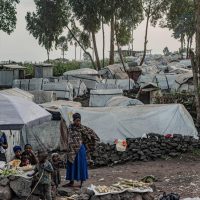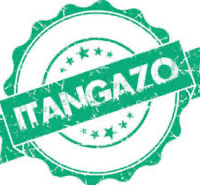Divisions among Africans countries were signed and sealed at the Berlin Conference in 1884-1885 that
partitioned Africa into colonies under different Western European Governments control. The Berlin
Conference regulated European colonisation and trade in Africa. Even in cases where Africans try to unite
Western powers always want to divide them, in order to exploit them.
Today, Africa has never recovered from such divisions even in the area of wildlife conservation and trade in
its wildlife products such as ivory and rhino horns. African countries are made to oppose one another for no
good reason. Therefore, it is unsurprising that Western animal rights groups and some Western countries
continue to successfully influence West, North and East African countries to oppose SADC countries’ bid to
trade in ivory and rhino horn – even to hunt elephants and rhinos.
This year, SADC countries have made proposals to trade in ivory, rhino horn and hunt rhino to the UN
Convention on International in Endangered Species of Fauna and Flora (CITES). The final decision will be
made at the CITES 18 th triennial meeting that will be held in Geneva, from 17-28 August 2019.
Sadly, a group of 10 countries (comprising nine African countries and one Arab nation) have already
opposed their fellow Southern African countries’ bid to benefit from their wildlife through trade. They have
incredibly suggested in a counter proposal that the elephant populations of Botswana, Namibia, South
Africa and Zimbabwe be moved from Appendix II to Appendix I, effectively preventing SADC countries from
using their wildlife. These opposition countries include Burkina Faso, Côte d’Ivoire, Gabon, Kenya, Liberia,
Niger, Nigeria, Sudan, Syrian Arab Republic and Togo.
Although the population of white rhinos in Eswatini (formerly known as Swaziland) is listed on Appendix II,
an annotation currently prevents international trade in rhino horn. Eswatini has proposed the removal of
this annotation so that it can sell an existing stock of 330 kg of rhino horn and then 20 kg per year from
non-lethal harvesting. Namibia proposed to transfer its population of white rhinos from Appendix I to II
with an annotation solely for the sale of live animals to appropriate and acceptable destinations and for
hunting trophies, with all other specimens to remain on Appendix I.
Zambia proposed to downlist its elephant population from Appendix I to Appendix II to permit sales of
registered ivory stocks to CITES-approved buyers as well as some specified non-ivory trade.
Meanwhile, Botswana, Namibia, South Africa and Zimbabwe would like to trade in registered ivory stocks
to CITES Secretariat-verified partners as well as some specified non-ivory trade. They proposed to do this by
amending an annotation that, although their elephant populations are listed in Appendix II, currently
disallows trade.
However, all these SADC countries’ proposals have already been opposed by nine fellow African countries,
before they even get debated at CoP18 in Geneva, Switzerland this month. Despite this opposition on the
African continent, SADC countries should not give up the fight to be granted their sovereign rights to trade
in their ivory rhino horn and even to hunt their white rhino as Namibia proposes to do. The Southern African
countries have viable elephant and rhino populations compared to Western animal rights influenced fellow
African countries that are unjustifiably opposing their pro-sustainable use proposals.
Despite this opposition from fellow African countries, SADC countries might just get the support they need
from other CITES member countries. This has happened before.
For example, in 1997 and 2000, recognizing that some Southern African elephant populations were healthy
and well managed, CITES member countries agreed to downlist the populations of Botswana, Namibia,
South Africa and Zimbabwe to Appendix II. In 1999 and again in 2008, sales of registered stocks of
government-owned ivory from these countries were authorized to China and Japan.
However, once of the major criticism against the temporary and not permanent permission to trade in
ivory and rhino horn is that the few cases when CITES permits ivory sales for SADC countries do not bring
great hope for achieving sustainable development in southern Africa, through use of wildlife. This is a
missed opportunity for the achievement of sustainable development in the SADC region, for which CITES
member countries that continue to unjustifiably vote against trade in ivory and of course rhino horn should
be held accountable.
Is CITES Undergoing Reforms?
Interestingly, in the press release that the CITES Secretariat released this week, almost 10 days before its
the 18 th CITES triennial meeting, the CITES Secretariat has announced ambitious plans that could reverse
the failures that it has been associated with for the past 44 years. Among them, the need to involve the
voice-less, almost forgotten and ‘powerless’ rural communities in the CITES decision-making process.
“The conference will also consider opportunities to enhance the role of indigenous, local and/or rural
communities in CITES decision-making processes and how to further strengthen collaboration with other
biodiversity-related conventions,” said the CITES Secretariat press release.
Despite being considered as one of the major stumbling blocks towards achieving sustainable development
by 2030 in SADC countries because of its continued blockade of trade in ivory and rhino horn, the CITES
Secretariat is surprisingly saying it will come up with measures to help achieve this, just 11 years away from
the 2030 – a UN set deadline deadline for achieving sustainable development worldwide, including Africa.
What a welcome sustainable development magic bullet, if that ever happens.
The CITES Secretariat said that it was going to present for discussion and adoption at CITES CoP18 in
Geneva, Switzerland a Strategic Vision Post-2020 that aims to ensure that, “By 2030, all international trade
in wild fauna and flora is legal and sustainable, consistent with the long-term conservation of species, and
thereby contributing to halting biodiversity loss.” It also highlights CITES’ role in contributing to the
achievement of the Sustainable Development Goals of the 2030 Agenda for Sustainable Development.
It remains to be seen whether or not these proposed changes are at long last a CITES Secretariat admission
that the continued ban of trade in wildlife products for the past 44-year-old have dismally failed to stop
rhino and elephant poaching as well as illegal rhino horn and ivory trade. It has always been argued that the
ban in ivory and rhino horn has not saved a single rhino and elephant, neither has it helped to stop both
illegal rhino horn and ivory trade. The truth is that the ban in these products fuels demand.
Therefore, CITES should in its new signs of reforms, go further to adopt a new strategy that admits that
trade not aid will save the African rhinos and elephants. It should abandon the one-shoe-size- fits-all
approach when deciding on which countries deserve to trade in their wildlife products. This means they
should exclusively use each country’s elephant and rhino population as a yardstick to grant it permission to
trade in rhino horn and ivory. The same goes for decisions on granting hunting quotas for elephants and
rhinos etc.
Sadly, the CITES press release did not announce any planned reforms to investigate and stop the voting
rigging scandals aimed at preventing trade in ivory and rhino horn at any cost; within the CITES decision-
– 3 –
making framework that many conservationists worldwide (including those from Africa) have complained
about for years with no action being taken against the culprits (Western animal rights groups).
It is such reforms that can restore CITES’ credibility that has continued to be damaged by the Western
animal rights groups’ anti-use agenda to the detriment of elephant and rhino conservation as well as the
African people’s socioeconomic well-being.
Without trade in ivory, rhino horn and without hunting – Africa cannot generate revenue to look after its
wildlife. Consequently, African governments are forced to divert funds from central treasury budgets that
were meant for poverty alleviation programmes and use them for wildlife conservation. This means that it
is always going to be very difficult for affected African countries to lift themselves out poverty as funds
meant for the improvement of human life continue to go to wildlife conservation because wildlife
continues to fail to pay for its own upkeep. When funds meant for building schools, hospitals, roads and
dams are used for wildlife conservation it means African remains paralysed in poverty. Currently, most
SADC rural communities sharing their land with wildlife are showing signs that it is too late to achieve
sustainable development by 2030. They go barefoot, poor, hungry, and hopeless, without clean drinking
water, decent healthcare or adequate educational facilities. They suffer these conditions because African
wildlife can’t pay for itself while the ban on ivory and rhino horn trade, and limitations on hunting, remain
in force.
Therefore, one wonders how the CITES Secretariat hopes to achieve sustainable development in Southern
Africa as long as the ban on international trade in rhino horn and ivory is still in force, with hunting markets
being cruelly shut down.
About the writer: Emmanuel Koro is a Johannesburg-based international award-winning environmental
journalist who has written extensively










